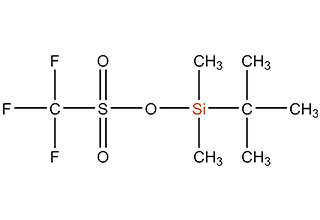Ⅰ. Selection of organic silane coupling agent
It is very difficult to predict organic silane coupling agent accurately by experience summary of testing data of organic silane coupling agent. After using organic silane coupling agent, increased bond strength is a series of complicated factor synthesis, such as infiltration, surface energy, adsorption of boundary layer, polar adsorption, acid-base interactions, etc.
Preselecting organic silane coupling agent can follow the rules: unsaturated poly vinegar can choose organic silane coupling agents of vinyl, epoxy group and methylacryloxy; appropriate of polyurethane can choose amino silane; epoxy shall choose organic silane coupling agent of epoxy group or amino type; phenolic resin shall choose organic silane coupling agents of amidogen or urea base type; olefin polymer shall choose organic silane coupling agent of vinyl type; rubber vulcanized with Sulphur shall choose organic silane coupling agent of hydrophobic base type, etc.
As known, hydrolytic rate of silane coupling agent depends on silicon can group Si-X, and reactivity with organic polymer depends on carbon functional group C-Y. Therefore, it is crucial to select suitable silane coupling agent for different base materials or process objects.
The main methods for selection are testing and preselecting on the basis of prior experiences or rules. For example, in general, unsaturated polyester usually selects silane coupling agent including CH2=CMeCOOVi and CH2-CHOCH2O; epoxy usually selects silane coupling agent including CH2CHCH2O and H2N; phenolic resin usually selects silane coupling agent including H2N and H2NCONH; polyolefin usually selects vinyl silane; rubber vulcanized with Sulphur usually selects Hydroxyl silane, etc.
Since bonding strength between dissimilar materials are affected by a series of factors, such as moist, surface energy, interface layer, polar adsorption, acid-base function, interpenetrating polymer network, covalent bond reaction, etc. Therefore, sometimes it is not accurate enough by testing and preselection, it is necessary to take into account material composition, its sensitivity against organic silane coupling agent reaction.
To improve submerge water test and reduce modification cost, trialkylsilane can be mixed in silane coupling agent; Polymer of silane coupling agent can be shared with difficult sticky materials.
Tackifier is realized by organic silane coupling agent and polymer creating chemical bond and hydrogen bond; producing moist and surface energy effect; improving polymer crystallinity, acid-base reaction as well as producing interpenetrating polymer network, etc.
Tackifier is mainly about 3 kinds of system:
(1) Inorganic materials vs organic materials;
(2) Inorganic materials vs inorganic materials;
(3) Organic materials vs organic materials;
For the first bond, inorganic materials shall be sticked to polymer, so you shall give priority to reactivity of Y in organic silane coupling agent and functional group in polymer; the latter two belong to bond between the same kind materials, so antihydrophilic polymer of silane coupling agent and inorganic materials demand selected silane coupling agent for bond.
 English
English 日本語
日本語 한국어
한국어 français
français Deutsch
Deutsch Español
Español italiano
italiano русский
русский português
português العربية
العربية tiếng việt
tiếng việt

